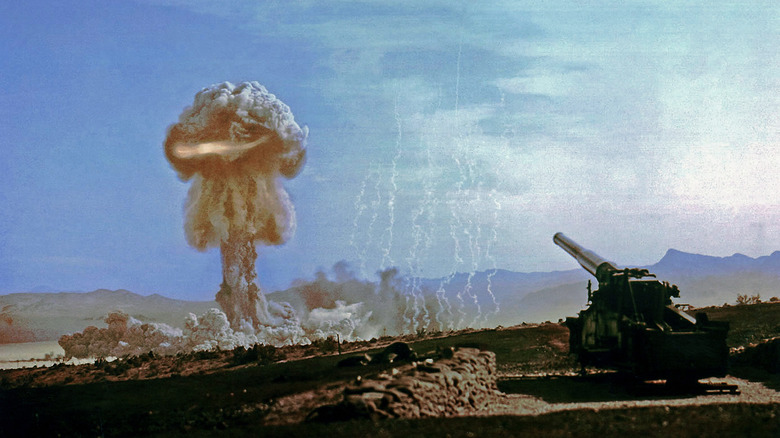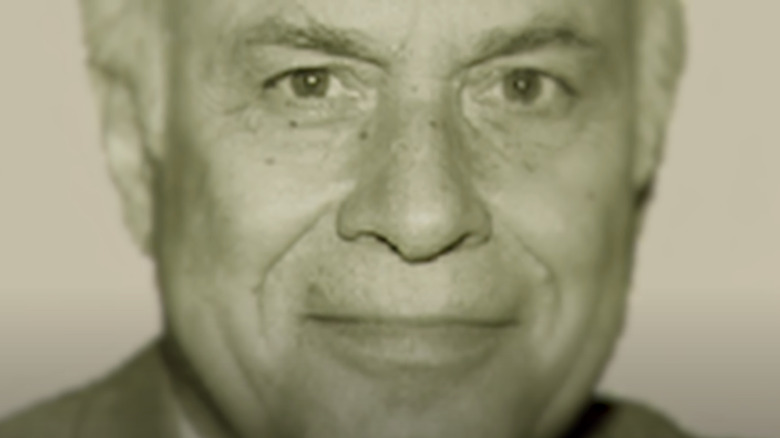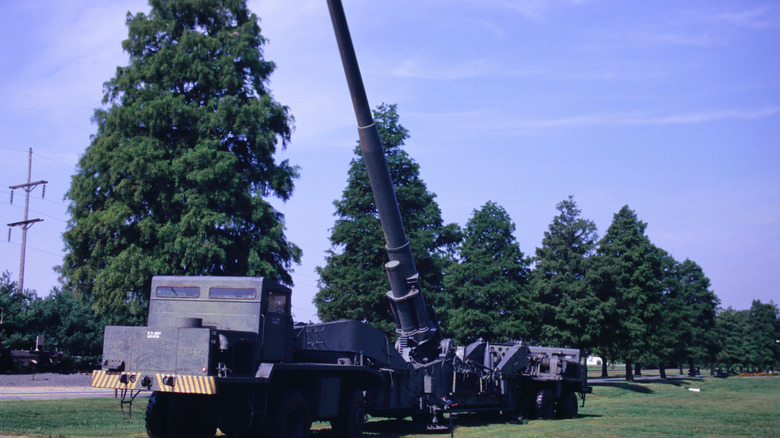What Was The M65 Atomic Cannon And Why Was It Only Fired Once?
The nuclear era was ushered in by the United States on July 16, 1945 with the successful test of a nuclear bomb in Los Alamos, New Mexico. The military would drop the first nuclear weapons in less than a month's time after that on Hiroshima, Japan, on Aug. 6, 1945. It then hit Nagasaki on Aug. 9. The destruction would level large swaths of both cities and would cause the deaths of well over 100,000 people, though the true toll can never be calculated. But the power of nuclear weapons had been demonstrated to the world.
Not to be outdone, the Soviet Union detonated their first nuclear weapon in Kazakhstan on August 29, 1949. This effectively kicked off the nuclear arms race, which would become synonymous with the Cold War. Fears of Soviet aggression prompted the United States to develop and deploy nuclear weapons as a way to deter or counter a Soviet attack. New delivery systems for these were needed beyond just the conventional bomber and the U.S. Army specifically wanted one of its own. It would come in the form of the M65 280mm Motorized Heavy Gun, also known as Atomic Annie.
How the M65 was developed
The Army's ability to use tactical nuclear weapons on the battlefield required a delivery system that could project a nuclear artillery round from the front lines. By the end of the 1940s, engineer Robert M. Schwartz was assigned to the project, sent to the Pentagon and locked in a room, under guard for 15 days where he developed an artillery platform that met the Army's needs. Schwartz took inspiration from the massive artillery guns that the Germans had developed in World War II. These included guns from the K5 heavy railway line, that produced such behemoths such as Anzio Annie and the Schwerer Gustav.
The M65 (first tested as the T131) utilized a 240mm cannon that was transported by two Kenworth Motor Trucks at the front and rear. The cannon itself was 38 feet long, and when connected to the trucks, the entire system would weigh around 86 tons. The entire system was operated by a crew of between five to seven men, who could deploy and make the cannon ready to fire within 12 minutes. The cannon was designed to fire a 15-kiloton, 850-lb W9 nuclear artillery shell, the first of its kind, up to 20 miles. The entire system and its artillery shell began testing at Aberdeen Proving Grounds in 1952, but it would be years later when its nuclear capability would be tested.
It was a one and done
With development complete, the M65 was transported to Camp Desert Rock at the Nevada Proving Grounds (roughly 65 miles northwest of Las Vegas) where it would take part in Operation Upshot-Knothole. The operation was a series of military preparedness tests centered around the use and effects of tactical nuclear weapons. Shot Grable, actually tenth in the series, was the codename of the atomic cannons test that occurred on May 25, 1953.
The exercise had more than 2,600 troops and over 700 observers who witnessed the firing of the world's first nuclear artillery shell at 8:31 a.m. that day. The shell took 19 seconds after its firing before it detonated roughly 8 miles away with the equivalent force of 15,000 tons of TNT. Tom Lambert, a soldier who witnessed the blast, said, "You could feel the heat on your face 25 miles away." The M65 earned the name of "Atomic Annie" for being the only platform to fire a nuclear artillery shell. The U.S. would construct and deploy 20 more M65's throughout the world, but advances in nuclear missile technology would make them obsolete by the end of 1963. The atomic cannon was a true, one hit wonder.


